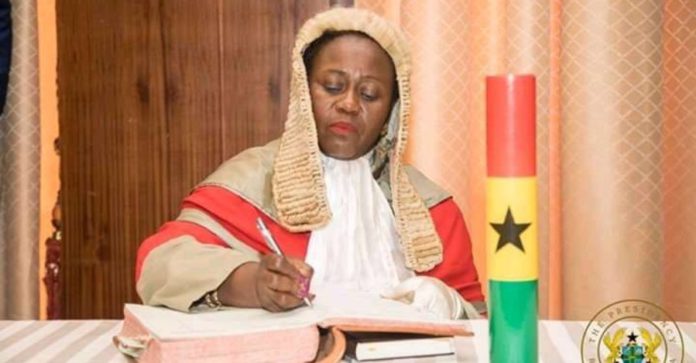Chief Justice Gertrude Torkornoo has submitted her preliminary response to President John Mahama following petitions seeking her removal from office.
This submission comes as the 10-day window granted to her to respond to the petitions elapses on Monday, April 7.
The petitions were submitted to the President earlier last month and have sparked national attention, leading to legal and constitutional debates on the proper procedure for handling such matters.
In a letter to the President last week, Justice Torkornoo requested copies of the petitions and asked for at least seven additional days to respond, in line with due process and fairness.
Her response, now formally submitted to the President and the Council of State, is set to be considered as part of the consultation process under Article 146(6) of the 1992 Constitution.
This step is crucial as it could determine whether a committee will be set up to investigate the allegations against the Chief Justice.
Meanwhile, the Supreme Court is set to hear a suit on April 9, filed by Old Tafo MP Vincent Ekow Assafuah, challenging the legality of the President initiating the removal process without first notifying the Chief Justice.
The case adds an additional layer of complexity to the situation as it addresses whether the proper procedure was followed in notifying Justice Torkornoo.
The law surrounding the removal of the Chief Justice is governed by Article 146 of the Constitution, which outlines the steps for the removal of a Justice of the Superior Court or a Chairman of a Regional Tribunal. According to Article 146, the President may only remove a Justice from office for stated misbehaviour, incompetence, or the inability to perform their functions due to physical or mental infirmity.
Key Provisions of Article 146 Regarding Removal:
Article 146(1): A Justice of the Superior Court or a Chairman of a Regional Tribunal can only be removed from office for misbehaviour, incompetence, or inability to perform their duties due to infirmity.
Article 146(2): The removal process must follow the specific procedures outlined in the article.
Article 146(3): If the President receives a petition for the removal of a Justice, other than the Chief Justice, the petition is referred to the Chief Justice for a determination of whether there is a prima facie case.
Article 146(4): If the Chief Justice finds a prima facie case, a committee is formed to investigate the complaint. This committee consists of three Justices or Chairpersons of Regional Tribunals and two other individuals, not members of the Council of State or Parliament.
Article 146(5): The committee investigates the complaint and submits its recommendations to the Chief Justice, who forwards them to the President.
Article 146(6): For the removal of the Chief Justice, the President, in consultation with the Council of State, forms a committee of two Supreme Court Justices and three non-lawyers to investigate and recommend whether the Chief Justice should be removed.
Article 146(7): The committee will inquire into the petition and make its recommendation to the President.
Article 146(8): All proceedings under this article must be conducted in camera, and the person against whom the petition is made is entitled to be heard in their defence.
Article 146(9): The President must act in accordance with the recommendations of the committee.
Article 146(10): The President may suspend the Chief Justice or any other Justice during the process, following advice from the Council of State or the Judicial Council.
The outcome of the consultation with the Council of State, the Supreme Court’s hearing of the suit, and the actions taken by the President will determine the next steps in this unfolding situation.
As the process moves forward, the nation remains attentive to how the constitutional provisions will be applied and what consequences may arise from the ongoing petitions.
ALSO READ:

